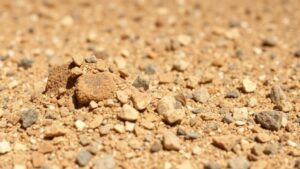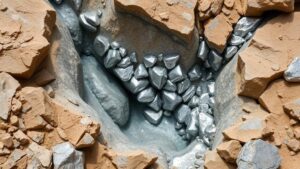Developing a Step-by-Step Plan for Small-Scale Ore Processing
Developing a Step-by-Step Plan for Small-Scale Ore Processing
Small-scale ore processing is an integral part of the mining industry, allowing small operators and artisanal miners to efficiently extract valuable minerals. This article outlines a comprehensive plan to help individuals and small businesses develop their ore processing operations, enhancing efficiency and profitability while ensuring compliance with environmental regulations.
Understanding Ore Processing
Ore processing involves the extraction of valuable minerals from mined material. This process typically includes various stages such as crushing, grinding, concentration, and sometimes, smelting or refining. complexity of the operations can vary widely based on the mineral being processed and the scale of production.
Step 1: Research and Feasibility Analysis
Before embarking on a processing plan, it is essential to conduct thorough research and feasibility analysis. This includes:
- Identifying the mineral resources available.
- Conducting market analysis to determine the demand for specific minerals.
- Evaluating the costs associated with extraction and processing.
For example, a small-scale gold mining operation in Peru demonstrated the importance of this step. By analyzing market trends and potential competitors, the operators were able to tailor their processing methods to meet specific market demands, improving their profitability.
Step 2: Designing the Processing Plant
The design of the processing plant is a critical step that requires careful planning. Key considerations include:
- Choosing the appropriate processing methods (e.g., gravity separation, flotation).
- Determining the equipment and machinery needed (crushers, concentrators).
- Planning for waste management and environmental protection measures.
A significant example can be seen in the small-scale tin processing plant in Indonesia, where gravitational separation methods were implemented to effectively process low-grade ore, minimizing operational costs while maximizing recovery rates.
Step 3: Sourcing Equipment and Materials
Once the design is complete, the next step is sourcing the necessary equipment. This may involve:
- Purchasing new or used equipment within budget constraints.
- Engaging suppliers that offer reliable maintenance and support services.
For example, small-scale cobalt mining operations in Africa have successfully partnered with local manufacturers to acquire affordable yet durable processing equipment tailored for their specific needs.
Step 4: Useing the Operations
Then, the implementation phase involves setting up the processing plant and training workers. Areas to focus on include:
- Safety protocols and worker training programs.
- Setting up a workflow for efficient processing.
- Monitoring systems for quality control and regulatory compliance.
In a successful case in Ghana, a small-scale gold processing operation established rigorous worker safety programs and quality control systems, resulting in a reduction of accidents and increased production efficiency.
Step 5: Continuous Monitoring and Improvement
Post-implementation, it is vital to establish a system for continuous monitoring and improvement. This means:
- Regularly assessing production efficiency and mineral recovery rates.
- Gathering feedback from employees to identify issues and areas for improvement.
- Adapting to market changes and technological advancements.
The experience of a small-scale zinc processing operation in Chile illustrates the long-term benefits of this approach. Through regular assessments and adaptations, they managed to increase their recovery rates by 15% over five years, significantly enhancing their profitability.
Conclusion
Developing a step-by-step plan for small-scale ore processing is not only feasible but can be highly profitable and sustainable. By conducting thorough research, designing an efficient processing plant, sourcing the right equipment, implementing effective operations, and engaging in continuous improvement, operators can achieve their business goals while contributing to the broader mining sectors growth.
Actionable takeaways for potential operators include:
- Conduct comprehensive market and feasibility studies.
- Design processing plants tailored to specific mineral types.
- Invest in training and safety to ensure worker well-being.
- Use ongoing assessment protocols to adapt to changes.


